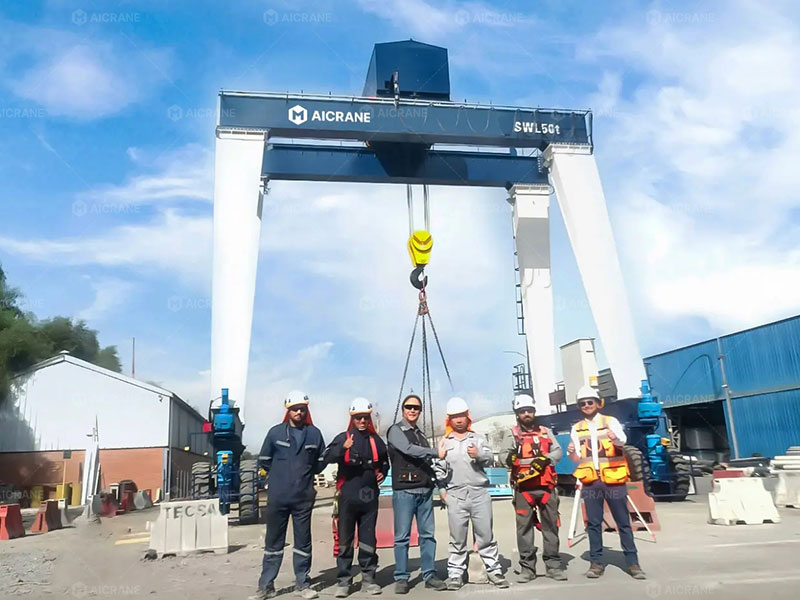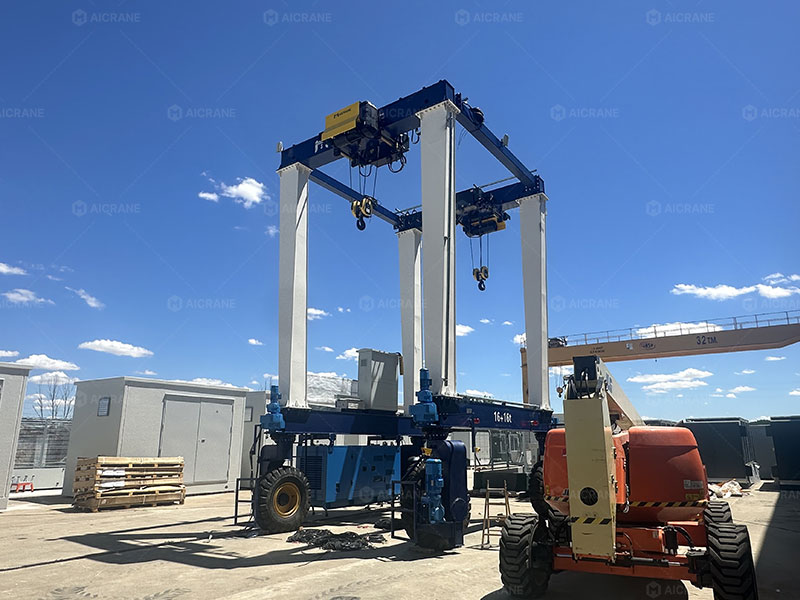Rubber tyred gantry (RTG) cranes are essential in container terminals, logistics yards, and industrial facilities where mobility and flexibility are critical. These cranes efficiently move heavy loads between storage areas and work continuously in demanding environments.
When businesses begin comparing RTG crane prices, one factor that often stands out – but is not always well understood – is design complexity. Two RTG cranes with similar lifting capacities can differ greatly in cost depending on how complex their structural design, control systems, and customization requirements are. Understanding this relationship helps buyers make smarter investment decisions.

What Design Complexity Means in RTG Cranes
Design complexity refers to the degree of engineering sophistication involved in creating a rubber tyred gantry crane. It covers aspects such as structural configuration, control systems, steering modes, power sources, and automation levels.
A standard RTG crane might feature a conventional steel frame, a diesel generator, and manual controls. In contrast, a complex model could include advanced steering systems, hybrid or electric drives, anti-sway mechanisms, and automated control systems. Each layer of sophistication increases engineering time, component precision, and system integration – factors that directly affect cost.
Structural Design and Material Complexity
The mechanical structure forms the backbone of every RTG crane, and its complexity strongly influences price.
Span and Lifting Height
The span and lifting height determine the crane’s operational range. RTG container cranes designed for wider spans or higher stacking levels (e.g., 6+1 containers high) need larger girders, stronger materials, and more rigorous stress analysis – all of which increase production cost.
Weight Optimization
To achieve lighter yet stronger structures, engineers apply finite element analysis (FEA) and use premium-grade steel like Q345B or European standards. These optimization processes improve performance but require more advanced fabrication, which raises the price.
Load Distribution and Reinforcement
RTG cranes that handle irregular or heavy-duty loads – such as concrete beams or steel coils – need localized structural reinforcement. Custom load-bearing designs add engineering hours and specialized welding, contributing to higher costs.

Motion and Steering Systems
A defining feature of RTG cranes is their mobility on rubber tyres, allowing free movement across yards. However, the sophistication of their motion and steering systems has a direct effect on gantry crane price.
Basic vs. Advanced Steering Modes
Entry-level RTGs often use four-wheel steering suitable for linear movement. More advanced cranes adopt eight- or sixteen-wheel systems, enabling straight, diagonal, and transverse travel.
These require complex hydraulic or electric actuators, position sensors, and control logic – each adding to engineering and component costs.
Drive System Design
Electric drive systems with variable frequency drives (VFDs) provide smooth motion and energy savings compared to traditional diesel-hydraulic drives. However, they involve higher software tuning and electrical design complexity, which increases overall cost.
Power System Design
The power system is another major price determinant, with diesel, hybrid, and fully electric options each having different cost implications.
Diesel-Driven RTG Cranes
Diesel models are usually more affordable upfront but require heavy-duty engines, exhaust systems, and cooling solutions. These components still contribute to mechanical and maintenance costs.
Hybrid and Electric RTG Cranes
Hybrid RTGs combine diesel generators and battery packs for energy efficiency. Their design requires battery management systems and regenerative braking technology, increasing complexity and price.
Fully electric RTGs (E-RTGs), powered through cables or busbars, offer lower operating costs but demand advanced electrical layouts and safety systems, making them the most expensive design.
Automation and Control Systems
Automation plays a growing role in modern RTG cranes, enhancing safety and performance but also increasing design and integration costs.
Anti-Sway and Load Control
Many advanced RTGs feature anti-sway systems that use sensors and algorithms to minimize load swing. Integrating these requires sophisticated control software and precise motion coordination, adding to the price.
Remote and Automated Operation
Semi-automated and remotely operated RTGs use laser scanners, cameras, and real-time positioning systems. Their inclusion adds not only to hardware cost but also to software development and system testing.
Safety and Monitoring
Extra systems – such as anti-collision, overload protection, and real-time fault diagnostics – enhance safety and efficiency but increase design and assembly costs.
Customization Requirements
RTG cranes are often customized for specific site conditions or operational needs, which increases engineering complexity and price.
Common customization examples include:
-
Adjusted gantry height or span for tight layouts
-
Specialized spreaders for non-containerized cargo
-
Enhanced lighting and monitoring systems
-
Integration with yard management software
Each customization requires additional design validation, component sourcing, and testing, extending production time and cost.
Manufacturing and Testing Complexity
Complex RTG cranes undergo more rigorous production and testing.
-
Hybrid and electric gantry cranes require prototype validation and electrical insulation testing.
-
Automated models need control software debugging and system synchronization before delivery.
-
Each testing phase demands skilled labor and extended production cycles, leading to higher final pricing.
Long-Term Cost Perspective
While complex designs increase initial investment, they often deliver better long-term value.
-
Energy-efficient systems lower fuel consumption.
-
Automation reduces human error and downtime.
-
Advanced control systems improve operational consistency and safety.
Therefore, businesses should evaluate RTG cranes based on total cost of ownership, not just purchase price. A higher upfront cost may lead to lower lifetime expenses and improved productivity.
Conclusion
Design complexity is one of the key factors that define the price of a rubber tyred gantry crane. Every engineering choice – from structural configuration and power systems to automation and customization – has a cost impact.
Understanding these relationships helps buyers choose cranes that align with their operational requirements and financial goals. Whether opting for a conventional diesel RTG or a state-of-the-art electric model, working with a reliable manufacturer that provides custom design and technical support ensures the investment delivers maximum performance and long-term value.